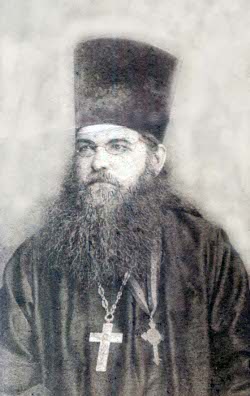Ivan Pervushin facts for kids
Quick facts for kids
Ivan Mikheevich Pervushin
|
|
|---|---|
| Иван Михеевич Первушин | |
 |
|
| Born | 27 January [O.S. 15 January] 1827 |
| Died | June 30, 1900 (aged 73) Mehonskoe, Shadrinsky Uyezd, Perm Governorate, Russian Empire
(now Shatrovsky District, Kurgan Oblast, Russian Federation) |
| Citizenship | |
| Alma mater | Kazan Theological Academy |
Ivan Mikheevich Pervushin (Russian: Иван Михеевич Первушин) was a Russian priest and a brilliant mathematician. He lived in the second half of the 1800s. He is famous for his work in number theory, which is a branch of mathematics that studies whole numbers.
Pervushin made some amazing discoveries. He found the ninth perfect number and its special prime factor, which is called the ninth Mersenne prime. He also proved that two very large Fermat numbers were not prime.
A writer named A. D. Nosilov, who knew Pervushin, described him as a "modest unknown worker of science." Nosilov visited Pervushin's study and was amazed. He said it was "filled up with different mathematical books." There were books by famous mathematicians like Chebyshev and Riemann. Pervushin also received new math publications from groups in Russia and other countries. Nosilov felt like he was in a professor's study, not a village priest's home. Besides math, Pervushin was also interested in statistics and weather.
Life Story of Ivan Pervushin
Ivan Pervushin was born on January 27, 1827, in Lysva, a town in the Russian Empire. Some records suggest he was born in a different town, but recent findings confirm Lysva as his birthplace. His grandfather was also a priest in Lysva.
In 1852, Pervushin finished his studies at the Kazan clerical academy. After graduating, he became a priest. He first lived in Perm, then moved to a small village called Zamaraevo. This village was quite far from big cities, about 150 miles from Ekaterinburg. He lived there for 25 years.
While in Zamaraevo, Pervushin did something important for the community. In 1859, he started a rural school. This helped local children get an education.
In 1883, he moved to the nearby town of Shadrinsk. There, he wrote an article that criticized the local government. Because of this, he was sent away to the village of Mehonskoe in 1887.
Ivan Pervushin passed away on June 30, 1900, in Mehonskoe. He was 73 years old.
His Discoveries in Number Theory
Being a priest gave Pervushin enough time to follow his passion: mathematics. He was especially interested in number theory, which looks at the properties of numbers.
In 1877 and 1878, he shared two important papers with the Russian Academy of Sciences. In these papers, he showed that two very large Fermat numbers were not prime numbers. This means they could be divided by other numbers besides 1 and themselves. He proved that:
- The 12th Fermat number, which is
 , can be divided by 114,689.
, can be divided by 114,689. - The 23rd Fermat number, which is
 , can be divided by 167,772,161.
, can be divided by 167,772,161.
In 1883, Pervushin made another big discovery. He proved that the number Failed to parse (Missing <code>texvc</code> executable. Please see math/README to configure.): 2^{61}-1 is a Mersenne prime. A Mersenne prime is a prime number that is one less than a power of two. This number is huge: 2,305,843,009,213,693,951!
Because he found this Mersenne prime, he also proved that Failed to parse (Missing <code>texvc</code> executable. Please see math/README to configure.): 2^{60}(2^{61}-1) is a perfect number. A perfect number is a positive whole number that is equal to the sum of its positive divisors (not including the number itself). This perfect number is also incredibly large: 265,845,599,156,983,174,465,469,261,595,384,2176!
At that time, these were the second largest known prime number and the second largest known perfect number. Only the numbers found by Édouard Lucas seven years earlier were larger. Pervushin's discoveries remained the second largest until 1911. That's when Ralph Ernest Powers found an even larger prime and perfect number.
Pervushin was also recognized internationally. He was a contributor to the International World Congress of Mathematicians in 1893. This event was part of the World's Columbian Exposition in Chicago. It was an early version of the big International Congress of Mathematicians meetings held today. However, Pervushin himself did not travel to attend the congress.

